Text
(In response to the reblong) I have to disagree with the point that Madoka's mother coerced her into wearing the ribbon. While I understand the point being made, and I don't disagree entirely, I believe that Junko's influence is just that: influence. There is a big difference between that and coercion. While Madoka is indeed timid and meek at the start of the series, I feel as if dismissing this choice of hers that establishes a crucial theme in the series defeats a lot of the point of this scene. While it does establish Madoka's timidness and lack of willingness to take ahold of her life, it also establishes that she does have that choice, even if it is very meagerly. I think these two points can co-exist, but I just don't like the idea of dismissing Madoka's autonomy at the beginning of the series, as I feel the point is that it has always been there, but the opportunity to use it has not, which you did touch upon and I agree with, but exists at this beginning point moreso than you stated. Overall, I don't entirely think you're wrong, but I don't think that disproves my point. Either way, thank you for your input, and while I don't entirely agree, I think your insight is certainly impressive! Thank you again! (Also, sorry if this is weirdly formatted or worded, I'm not entirely used to Tumblr yet!)
My Analysis of Madoka Kaname's Magical Girl Outfit.
This post will contain spoilers for Puella Magi Madoka Magica as well as Madoka Magica: Rebellion!
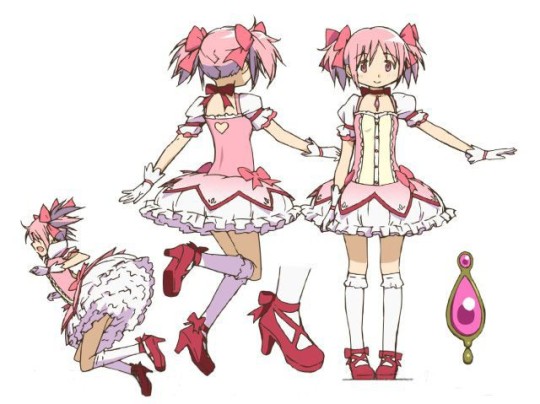
This is Madoka Kaname's magical girl design she maintains throughout all timelines of Madoka Magica. In this analysis, I will be explaining why this design is mote important than aesthetics, and how it plays into PMMM's storytelling.
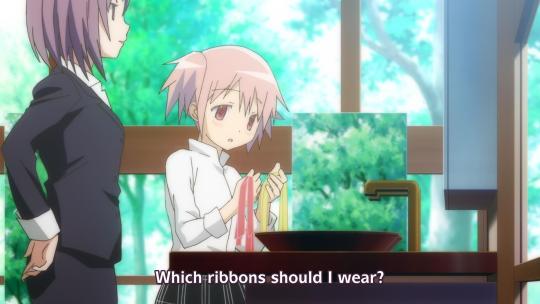
The Red vs. Yellow Ribbon
The red ribbon Madoka wears all throughout the series is introduced in episode 1, where her mother, Junko, instructs her to pick it over a yellow ribbon. This scene has a major significance in Madoka's character, showing her as a timid and generally maliable person, but also has the importance of introducing Madoka's first moment of autonomy. Madoka chooses to wear this ribbon, even if it is under the instruction of her mother, and picks it over the yellow ribbon, which she can later be seen wearing in Rebellion and sharing the eye colour of in her goddess form. This is important as Madoka's other forms, whether altered by a wish or a corrupted soul gem, all contain something she did not choose: the colour yellow. In Madoka's final moments as a conscious human being, she hands off her last bit of autonomy over to Homura, both metaphorically and literally with the passing of the red ribbon. When she reaches godhood. Madoka can be seen wearing white ribbons, which, in a traditional fashion, represent the purity a holy being would possess. However, this could also be seen as the nullification of both the red and yellow ribbon. Madoka has made the ultimate choice and therefore has rid herself of mortal woes, including that of need for autonomy and personal choice. She becomes merely a concept, which is everything and nothing. Madoka has made the ultimate movement of autonomy by choosing to sacrifice it, and the white ribbons show how neither the red nor yellow ribbons have an impact on her anymore, and how neither what she wants to be vs. who she is matters in her new state.
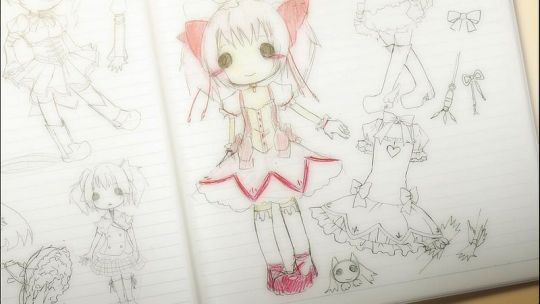
Madoka's Self Design
Unlike all the other main magical girls presented in the show, Madoka willingly chooses her outfit to wear while fighting witches. While not the most practical, it represents her first step towards being her own person, separate from friends and family. Madoka has found a way to prove her worth as a singular individual through the form of being a magical girl, and while she does not become one until much later in the series, this significance shows in her designing what will ultimately become the beginning of her end and the end of the witches. When wearing this outfit in the last episode, Madoka has fully embraced her self-worth, capability, and ability to make her own decisions. She has taken her first rudimentary step towards self-confidence and embraced it, defining herself as both the Madoka who chose to sacrifice everything for the world as well as the Madoka who was scared she would never make an impact on the world.
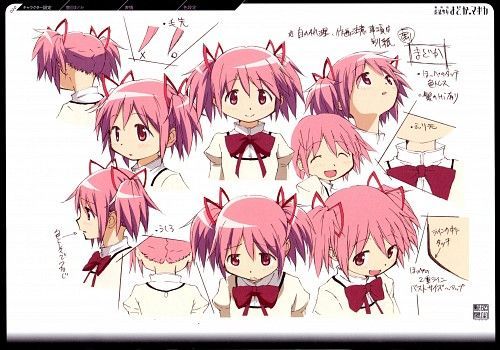
Feminity and Girlhood
PMMM, under all the scary scenes and flipped expectations, is still a magical girl series. A series directed at young girls and women to generally find self-worth in their feminine qualities. Madoka is the epitome of this, being the almost idealistic girl. Mild-mannered, timid, quiet, and kind. Madoka is the "perfect" girl in manner senses. However, instead of turning this trope on its head to present feminity as a negative, it instead shows it as a strength. Madoka's feminine design, both as a magical girl and as a goddess, represents her feminine qualities without shying away from the weaknesses of patriarchal societies and negative self-worth projected onto young women (I will touch on this more in my Sayaka outfit analysis). Madoka, as well as embracing feminity, is embracing girlhood as a whole. This feminine design is a representation of being a girl, or at least what society expects from girls. Madoka, in embracing what it is like to be a teenage girl, is made to represent the power behind women in any society, magical or not.

Godhood and Acceptance
In Madoka's final appearance in the main series, she appears as a god who is watching over the world, eradicating witches and saving magical girls. In this design, we can see her as a large figure dressed in white. This, of course, is similar to how many holy figures are presented, white generally being the colour of purity. Another thing to notice is Madoka's eye colour, which had changed from pink to yellow. I believe this shows Madoka has not only done what was mentioned prior but accepted all parts of herself, including the girl who was afraid of looking too flashy.

Rebellion and The Yellow Ribbon
Madoka, existing within Homura's new world that was created from her corrupted soul gem, is seen wearing the yellow ribbon from the first episode. I believe that this version of Madoka, being Homura's (in her mental state in Rebellion) ideal version of Madoka, is less confident than the already meek Madoka we see in the first episode of the main series. With no friends like Sayaka or Hitomi to support her due to her being a transfer student in Homura's new reality, it is natural she would be less bold. This coincides with the yellow ribbon once again, representing Madoka's lack of autonomy in the situation, being a fabricated version of herself to represent Homura's idealistic view of her. This concludes with Homura being unable to handle this version of Madoka she has created and returning her red ribbons, but even this can not return Madoka's basic autonomy to choose her own destiny. Madoka's choice, as timid and frail as it was, was to wear the yellow ribbon, only to have that replaced by Homura with the red ribbon. No matter what, her self-control is taken away from her, whether it is by death, witches, corruption, or obsession.
126 notes
·
View notes
Text
Long bacon store (version without text under cut)


#yuupomu#yupomu#love live!#love live#love live nijigasaki#love live nijigasaki school idol club#yu x ayumu#yuu x ayumu#ayumu x yuu#ayumu x yu#yu takasaki#ayumu uehara
13 notes
·
View notes
Text
Eat your heart out! ♡

#prsk#prsk fa#pjsk fanart#pjsk#project sekai art#project sekai#airi#airi momoi#momoi airi#valentines day#happy valentine's day#pink aesthetic
8 notes
·
View notes
Text

#traditional art#artwork#art#traditional drawing#drawing#original character#original art#artists on tumblr#doodle#ink drawing#ink#pen#pen drawing#pen art
1 note
·
View note
Text
I DO NOT SUPPORT YANDERE-DEV
More Yandere Simulator redesigns, but this time, it is just doodles.

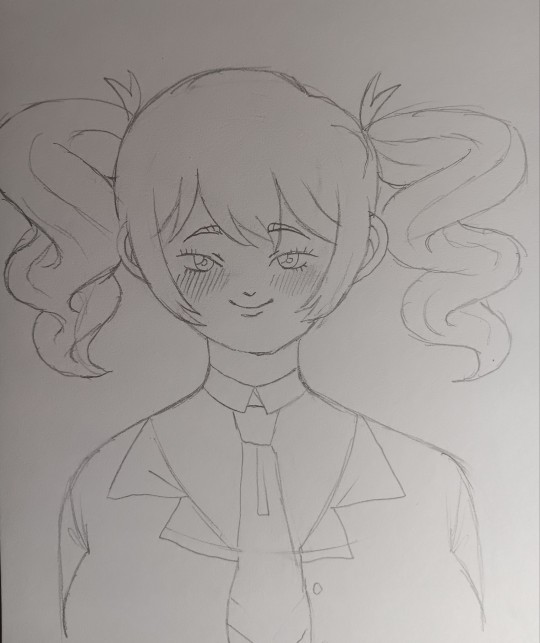
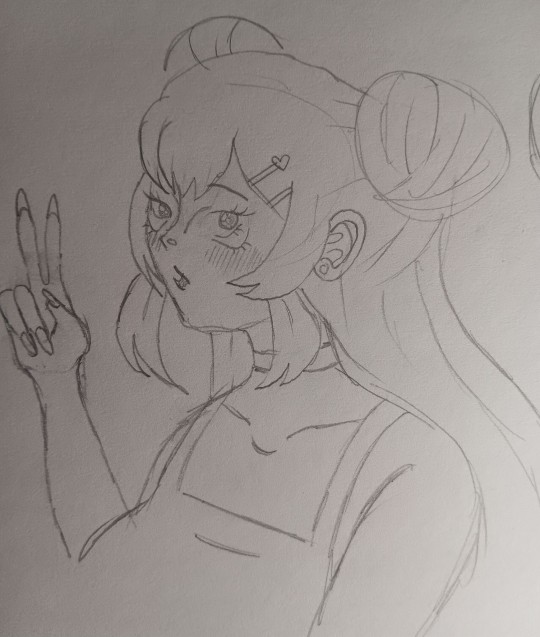

#yandere simulator rewrite#yandere simulator#yandere simulator ayano#ayano aishi#yandere sim#yandere sim ayano#yandere simulator redesign#doodle#art#artwork#traditional art#traditional drawing#traditional illustration#sketch
5 notes
·
View notes
Text
I DO NOT SUPPORT YANDERE-DEV!
Osana Najimi redesign and rewrite!

This is my redesign of Osana Najimi from Yandere Simulator! As stated in the title, I do not support Yandere-Dev, and I am making these posts out of spite and childhood nostalgia!
Check out the full rewrite and explanation of the redesign under the cut!
The Design
For the design, I changed a few aspects while trying to keep the main core of the design. The main changes I made are:
Twin Tails: I changed Osana's twin tails to an up-down hairstyle with buns atop her pigtails. This is for a few reasons. First, I figured that changing her hair to something more stereotypically "stylish" would add more personality to her character and give hints towards her slight friendship with the gyarus, who she is imitating the style of. I also added the buns to give it a Sailor Moon-esc feel, giving credence to her quest line in which she is being stalked for looking like an anime character. Well, I am aware this anime character is not Sailor Moon, I figured making her look similar to one of the most iconic anime characters would hint to her task!
Scrunchies: I kept Osana's scrunchies but moved their position from her original twin tails to her new buns. I decided to do this to keep her tied with Raibaru (who will likely receive a name change, but will be referred to as Raibaru as for now), who is still her best friend and wears a polka dot headband to compliment Osana's scrunchies!
Hair Clips: I changed Osana's hairband to hair clips to avoid clutter in the head area. This is also due to her admiration of gyaru style, which often involves a heavy focus on decora.
Eye Colour: I changed Osana's eye colour to a salmon pink to match her scrunchies and socks (not depicted in the drawing). I did this to draw more attention to the face, as well as make her stand out as a rival compared to the other students, who in this rewrite typically have the same eye and hair colour.
Uniform: I changed Osana's uniform from the typical sailor suit to a more formal iteration of a Japanese school uniform. This is more of a personal choice that will remain consistent throughout designs, but I figured I'd mention the reasons why! I wanted to separate the designs further from the original game as well as make it more distant from the middle school reminsant designs of the sailor suits, as all rivals in this rewrite (besides Hanako) are 18 to be on equal ground, being in late high school!
Rewrite
In this section, I will list Osana's elimination methods unique to this rewrite, as well as aspects of her personality I have changed!
Elimination One: Turning Raibaru against Osana
In this elimination, you will have to successfully turn Osana's best friend, Raibaru, against her by the end of the first week.
To perform this elimination, you must collect dirt on Osana. Think of the rejection ending but more complicated. This is for players who want a challenge and/or later perks.
Raibaru must be befriended. This requires you to have a high Physical Education stat, as well as either a higher gossiping ability or socializing ability (achieved by reading books/manga, watching TV, and/or owning certain objects that I will discuss in later posts). After Raibaru has been fully befriended, she will trust Ayano to give her reliable information. Paired with evidence, this will help turn her against Osana.
While you are working on befriending Raibaru, you must collect bad info on Osana. This is still in the works, but examples include taking photos of dead bodies with Osana's phone (panty shot function is removed), editing audio of Osana speaking negatively about Raibaru or others, and lowering Osana's reputation.
After providing evidence to Raibaru at least 4 days of the week, on Friday, she will end her friendship with Osana right before Osana is about to confess to Taro/Senpai. Because of their lowered relationship, Raibaru will not care about Osana's crush anymore, leading to positive interactions between them being canceled in favor of Osana spending time with the bullies and Raibaru spending time with the Martial Arts Club. Osana, devastated by losing her best friend, will stop trying to confess to Taro/Senpai, convinced her personality can only be liked by mean people such as the bullies.
Bonuses of completing this elimination include raising your gossiping stat, giving you a permanent reputation boost, and adding Osana as a potential "friend" for Ayano.
Elimination Two: The Bullies
In this elimination, you will get Osana to join the bullies. This will permanently change the rest of the game as well as Osana's appearance and personality. This can be done through a few different methods, though all end with Osana becoming a bully and being seen as too mean to be Taro/Senpai's lover.
The main method to do this is by gossiping fondly about Osana to the bullies, which requires you to lie, forge evidence, and befriend Musume.
Befriending Musume is the same as it is in the game. If you buy her cigarettes, she will feel closer to you. To speed up this process, you can complete the other bullies' tasks in replacement of lying about Osana.
Similar to the original rejection elimination, you will have to lie about Osana, but this time, in a positive manner to the bullies. The different ways this can be done is by boosting Osana's reputation while also sabotaging her interactions with Taro/Senpai. Not all of the sabatouge methods are required, though they do help.
This method requires some tweaking, though the main attributes are appealing to the bullies while also lowering her relationship with Taro/Senpai.
At the end of this elimination, Osana, instead of confessing, will be seen with the bullies, likely gossiping. Osana seems to have found a rank in the school hierarchy that is above Taro/Senpai and no longer considers him a romantic interest. Completing this method will unlock The Bully System, similar to Info-Chan, where you can find out secrets about other students if you complete enough tasks for them. Combined, these two methods can be deadly.
In this elimination method, you will matchmake Raibaru and Osana. Whether Raibaru has a crush on Osana prior is up to the player, but it still involves befriending and eventually getting the two together.
Elimination Three: Secret Crush
You will have to speak with Raibaru after her conversation about what kind of guy Osana likes. If you choose the right options (first talking positively about one of her interests and then calling her cute), after you leave, you can eavesdrop of Raibaru mumbling about why Osana doesn't feel the same. This unlocks the elimination.
Throughout the week, you will have to increase Raibaru's reputation, done by gossiping about her positively, specifically to Osana, as well as helping Raibaru complete a task.
Unlike the typical matchmaking route, you will have to complete Raibaru's new task of boosting her confidence. This involves speaking to the bullies and getting them to introduce her to the gyaru style, something Osana is a fan of.
At the end of the week, before Osana can confess to Taro/Senpai, Raibaru will interrupt her and confess. Osana, depending on Raibaru's reputation, will either accept or decline. If she declines, she will still confess to Taro/Senpai, but if she accepts, she will no longer be interested in him.
Completing this elimination method will grant you the ability to use Raibaru if you wish. More likely to believe you than a stranger, she will help defend you and will react less strongly to odd behavior such as weilding weaponry, being covered in paint, and fighting with other students. As this is an easier elimination method, it does not grant as many perks as the others.
That's All!
That is all I have to say on my current list of potential Osana eliminations! I am aware most focused on her relationship with Raibaru, something I feel is deeply unexplored in the game. Any questions or suggestions are welcome, and thank you if you've read this far!
#yandere simulator#yandere sim#yandere sim rivals#yandere simulator osana#yandere simulator osana najimi#osana najimi#yandere simulator redesign#yandere simulator rewrite#raibaru fumetsu#rewrite#redesign#i spent way too long on this
5 notes
·
View notes
Text
I just don't know what to do to make you happy again

#madohomu#madoka magica#pmmm#puella magi madoka magica#homura akemi#madoka kaname#this was so rushed#madoka x homura#homura x madoka
42 notes
·
View notes
Text
Sayaka Miki drawing I did! The sketch is old, but I just digitized it!
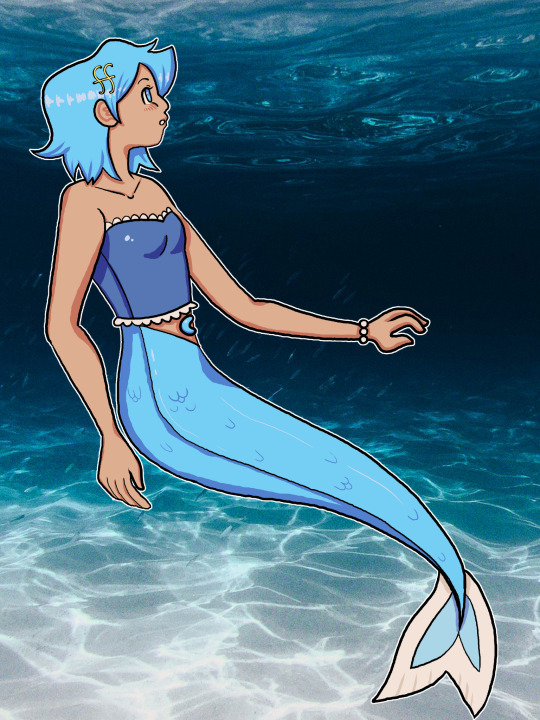
#sayaka miki#puella magi madoka magica#madoka magica#pmmm#pmmm sayaka#art#artwork#drawing#digital art
70 notes
·
View notes
Text
SPOILERS FOR PMMM AND REBELLION!
Does anyone else find it interesting how Homura, who is a presumably Catholic girl (based on the fact she transferred from a Catholic school) becomes the direct representation of the devil as a result of love for another girl? Combined with the other religious themes in the series and movie, but especially the movie, this stands out as interesting to me. I wonder if this is a methaporical statement on religion in almost a satirical sense? About how lesbians are made to be demons, and Homura, embracing this, transcends societal norms all for the girl she is in love with, quite literally declaring it in this scene? I dunno, just thought this was interesting.

38 notes
·
View notes
Text
My Analysis of Sayaka Miki's Magical Girl Outfit
This post will contain spoilers for Puella Magi Madoka Magica as well as Madoka Magica: Rebellion!

This is Sayaka Miki's magical girl design that she maintains throughout the entirety of the main series of Puella Magi Madoka Magica as well as Madoka Magica: Rebellion. In this analysis, I will be exploring the meanings behind her design.
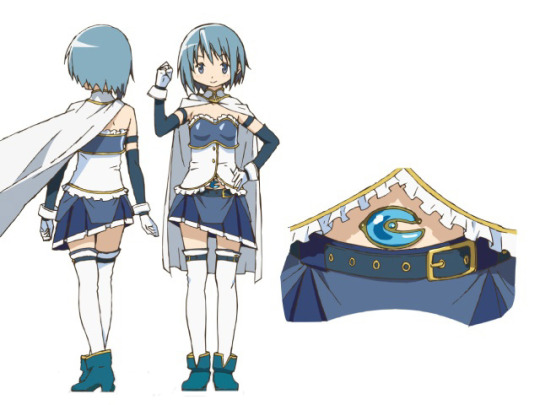
Knight In Shining Armor
Sayaka's magical girl outfit consists of a blue chest plate, white corset, cape, and blue skirt. This design contains many themes of knighthood, such as her weilding a sword and bearing a cape. This is a rather direct connection to Sayaka's strict moral compass, which she protects until her last moments as a conscious human being. I feel as if this also ties to the nature of her wish, which was chivalrous in intent. Wishing to heal is another form of wishing to protect, and Sayaka's design best shows what she wants to be: a protector for the boy she loves. This design also contains many belts and belt-like loops, which I presume are meant to show her xonnection to Kyousuke. Unlike Madoka, this design is not self sacrificial, as many aspects of knighthood have an exchange of goods or emotions. The knight saves the princess, and in return, the princess loves him. It is a classic fairy tale store that Sayaka is attempting to emulate, though it takes on a more sinister tone as the show progresses.

Dark vs. Light
Sayaka is at multiple points in the series, when at her lowest points, depicted in harsh shadows, and even at one point being literally consumed by darkness. This is a very classic symbolism of purity vs. impurity, a theme that plays heavily in Sayaka's arc and character. I feel it is done both to show her literally being consumed by the corruption of her soul gem, as well as the corruption of her mind and the stripping of her innocence. The first shot in which we see Sayaka cast in heavy shadow is during Mami's death scene. Sayaka and Madoka are huddled together in fear with shadows cast across their faces, showing their first knowledge of the dark truth of not just being a magical girl but life as a whole. The epitome of this symbolism is the scene on the train where she confronts two men talking poorly about their girlfriends. This represents a different sort of purity, and her childish nature on confronting the two men (the men are also being childish, but a 14 year old girl approaching two gross men on a train is never a good idea). Sayaka, however, in contrast to her near naive approach, begins to speak in a mature manner on the nature of relationships and what people, often women, give up for the sake of their partners (this will be expanded upon in my Homura analysis). The contrast between Sayaka's both mature and immature world view is jarring, complimentary to the harsh and staggering shadow that begins to consume her, showing she has been stripped of every last bit of her childhood innocence.
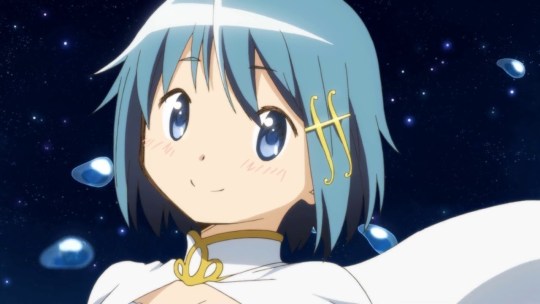
Music Symbolism
Sayaka, at multiple points of the show, is shown engaging in music by listening to it. This is most likely because her crush, Kyousuke, used to play the violin. When she wished for the healing of his hands so he could play again, she was granted her magical girl form, which contains the symbol for fortissimo, a musical term which means "very loud". This is both a literal and metaphorical portrayl of Sayaka, showing her to be a loud individual through words on multiple occasions as early as the first episode, but also on the loud and bold nature of her love and wish for Kyousuke. Sayaka has acted in a bold and brash manner by making a wish, hoping to make her love very loud and audible to Kyousuke. However, due to her own inability to confront her feelings, Sayaka's emotions go unheard, and while intended to be very loud from the beginning, end up not making a sound at all. I feel that I should also point out that Sayaka, whenever around music or musical items, is shown listening to them, not playing them. This shows how her wish was partially made for someone else, as some aspects of her design contain these musical symbols and aspects.
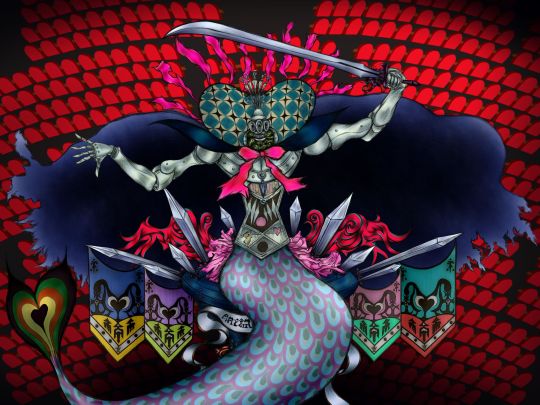
Oktavia Von Seckendoff
(This portion will be focused on Sayaka's witch design, so if you are only interested in Sayaka's magical girl design, feel free to skip! I may do a separate post on all the witch designs sometime later.)
Oktavia Von Seckendoff is the witch Sayaka transforms into after her soul gem corrupts and her grief seed hatches. This design contains much symbolism, so much that I will not be able to go over it all. If you wish to know everything about her witch design, feel free to ask or to direct yourself to the wiki or other analysis posts. However, the main theme of Sayaka's witch design, being that of a mermaid, had rather evident symbolism. Mermaids are depicted in different ways in many folklore but are often creatures that mourn lost love. This has a very direct tie with Sayaka's story, as she is experiencing the same. Mermaids, in certain folklore, are depicted as horrid beasts, akin to sirens, who lure their prey with their appearance only to devour them. This can be connected to Sayaka's final moments as a witch, where Kyoko offers her own soul gem, and therefore life, to save her. While not entices by a beautiful appearance like most mermaids, Kyoko is enticed by Sayaka's beautiful personality, and chooses to save her through the end of her own life. Oktavia holds many other key features, such as being a conductor, someone who would be the main focus of a violinist, showing how she wants to be the main focus of Kyousuke's attention. She conducts with her sword, connecting the knight theme mentioned prior, and throwing wheels of a train, the place where her grief seed hatched. Sayaka's final moments are connected to her design through these elements, which I feel makes a powerful symbolism for her lost love, lost innocence, and ultimately, lost life.
16 notes
·
View notes
Text
My Analysis of Madoka Kaname's Magical Girl Outfit.
This post will contain spoilers for Puella Magi Madoka Magica as well as Madoka Magica: Rebellion!

This is Madoka Kaname's magical girl design she maintains throughout all timelines of Madoka Magica. In this analysis, I will be explaining why this design is mote important than aesthetics, and how it plays into PMMM's storytelling.

The Red vs. Yellow Ribbon
The red ribbon Madoka wears all throughout the series is introduced in episode 1, where her mother, Junko, instructs her to pick it over a yellow ribbon. This scene has a major significance in Madoka's character, showing her as a timid and generally maliable person, but also has the importance of introducing Madoka's first moment of autonomy. Madoka chooses to wear this ribbon, even if it is under the instruction of her mother, and picks it over the yellow ribbon, which she can later be seen wearing in Rebellion and sharing the eye colour of in her goddess form. This is important as Madoka's other forms, whether altered by a wish or a corrupted soul gem, all contain something she did not choose: the colour yellow. In Madoka's final moments as a conscious human being, she hands off her last bit of autonomy over to Homura, both metaphorically and literally with the passing of the red ribbon. When she reaches godhood. Madoka can be seen wearing white ribbons, which, in a traditional fashion, represent the purity a holy being would possess. However, this could also be seen as the nullification of both the red and yellow ribbon. Madoka has made the ultimate choice and therefore has rid herself of mortal woes, including that of need for autonomy and personal choice. She becomes merely a concept, which is everything and nothing. Madoka has made the ultimate movement of autonomy by choosing to sacrifice it, and the white ribbons show how neither the red nor yellow ribbons have an impact on her anymore, and how neither what she wants to be vs. who she is matters in her new state.

Madoka's Self Design
Unlike all the other main magical girls presented in the show, Madoka willingly chooses her outfit to wear while fighting witches. While not the most practical, it represents her first step towards being her own person, separate from friends and family. Madoka has found a way to prove her worth as a singular individual through the form of being a magical girl, and while she does not become one until much later in the series, this significance shows in her designing what will ultimately become the beginning of her end and the end of the witches. When wearing this outfit in the last episode, Madoka has fully embraced her self-worth, capability, and ability to make her own decisions. She has taken her first rudimentary step towards self-confidence and embraced it, defining herself as both the Madoka who chose to sacrifice everything for the world as well as the Madoka who was scared she would never make an impact on the world.

Feminity and Girlhood
PMMM, under all the scary scenes and flipped expectations, is still a magical girl series. A series directed at young girls and women to generally find self-worth in their feminine qualities. Madoka is the epitome of this, being the almost idealistic girl. Mild-mannered, timid, quiet, and kind. Madoka is the "perfect" girl in manner senses. However, instead of turning this trope on its head to present feminity as a negative, it instead shows it as a strength. Madoka's feminine design, both as a magical girl and as a goddess, represents her feminine qualities without shying away from the weaknesses of patriarchal societies and negative self-worth projected onto young women (I will touch on this more in my Sayaka outfit analysis). Madoka, as well as embracing feminity, is embracing girlhood as a whole. This feminine design is a representation of being a girl, or at least what society expects from girls. Madoka, in embracing what it is like to be a teenage girl, is made to represent the power behind women in any society, magical or not.

Godhood and Acceptance
In Madoka's final appearance in the main series, she appears as a god who is watching over the world, eradicating witches and saving magical girls. In this design, we can see her as a large figure dressed in white. This, of course, is similar to how many holy figures are presented, white generally being the colour of purity. Another thing to notice is Madoka's eye colour, which had changed from pink to yellow. I believe this shows Madoka has not only done what was mentioned prior but accepted all parts of herself, including the girl who was afraid of looking too flashy.

Rebellion and The Yellow Ribbon
Madoka, existing within Homura's new world that was created from her corrupted soul gem, is seen wearing the yellow ribbon from the first episode. I believe that this version of Madoka, being Homura's (in her mental state in Rebellion) ideal version of Madoka, is less confident than the already meek Madoka we see in the first episode of the main series. With no friends like Sayaka or Hitomi to support her due to her being a transfer student in Homura's new reality, it is natural she would be less bold. This coincides with the yellow ribbon once again, representing Madoka's lack of autonomy in the situation, being a fabricated version of herself to represent Homura's idealistic view of her. This concludes with Homura being unable to handle this version of Madoka she has created and returning her red ribbons, but even this can not return Madoka's basic autonomy to choose her own destiny. Madoka's choice, as timid and frail as it was, was to wear the yellow ribbon, only to have that replaced by Homura with the red ribbon. No matter what, her self-control is taken away from her, whether it is by death, witches, corruption, or obsession.
#puella magi madoka magica#madoka magica#madoka kaname#mahou shoujo madoka magica#character analysis#pmmm#design analysis
126 notes
·
View notes
Text
My Analysis of The Soul Gem Placements in PMMM
Spoilers for all of the main PMMM series as well as vague spoilers for Rebellion.
In Madoka Magica, soul gems are a physical manifestation of the user's wish and a way to contain their soul to protect it from the dangers of the mortal world. Let's look into why each girls' soul gem is where they are!
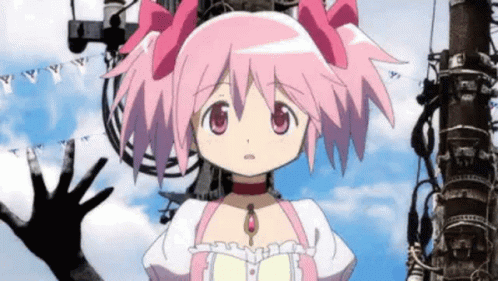
MADOKA KANAME
Madoka Kaname has her soul gem placed on her chest, right over where her heart would be. I believe this is due to the nature of her wish, which varies in different timelines but always comes from the heart and with pure intent. Madoka's wish in the first timeline is implied to have been to save the life of a cat. This wish is heartfelt and genuine. Her final wish, while on a much grander scale, is to save the world from witches, a wish made out of live for the world and the people in it. This is why her soul gem is placed over her heart.
TL;DR: Madoka's soul gem is over her heart because her wish is "heartfelt".

SAYAKA MIKI
Sayaka Miki has her soul gem places on her stomach, which could be interpreted in multiple ways. The interpretation I shall be going with for this post is that it represents the nature of her wish. Her wish is metaphorically gluttonous, her being a glutton for Kyousuke's attention. This is represented literally by her soul gem being on her stomach, the body part that is must associated with hunger and consumption.
TL;DR: Sayaka is "hungry" for Kyousuke's love and attention, shown in her wish, which is why her soul gem is on her stomach.
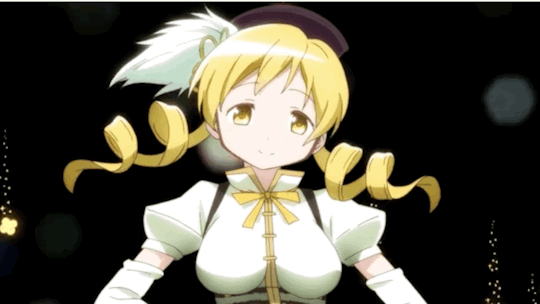
MAMI TOMOE
Mami Tomoe has her soulgem placed on the left (from her POV) side of her head. I believe this is because her wish, which was to save herself from a near fatal car accident, was made purely logically. This would be representative of the brain, which is what Mami's soul gem is placed over. The reason I mention it being on the left side is because people speculate the left side of the brain to be the logical and calculating part, which would even more so contribute to this idea.
TL;DR: Mami's soul gem is on her head because or was made logically with her brain.
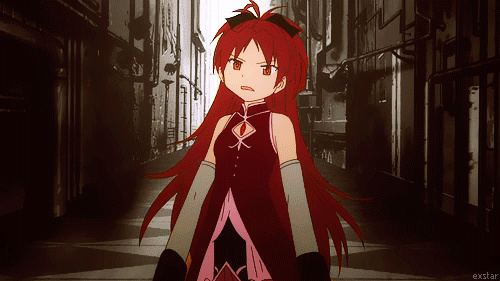
KYOKO SAKURA
Kyoko Sakura has a similar soul gem placement to Madoka. It is on her chest, representing another heartfelt wish. Kyoko's wish to save her father's church, while incredibly naive, is indicative of a pure hearted desire to help and be of use.
TL;DR: Kyoko's soul gem is on her chest because her wish came from the heart.
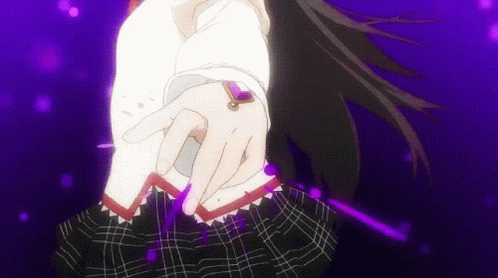
HOMURA AKEMI
Homura Akemi has her soul gem placed on her hand. This, I believe, is meant to represent how her wish was made to hold onto someone, that someone being Madoka. Homura wishing to go back to when she first met Madoka is a wish entirely centered around her love of Madoka and Madoka as a person. In Rebellion, I feel this placement takes on a more sinister meaning, as it is to control Madoka. This is represented by her hand, something that could be used to manipulate an object to her will.
TL;DR: Homura's soul gem is on her hand because her wish was made to hold onto Madoka.

That's all! I just felt like sharing this! I hope people agree!
#pmmm#puella magi madoka magica#madoka magica#madoka kaname#homura akemi#mami tomoe#kyoko sakura#sayaka miki#magical girl#magical girls#soul gems
123 notes
·
View notes